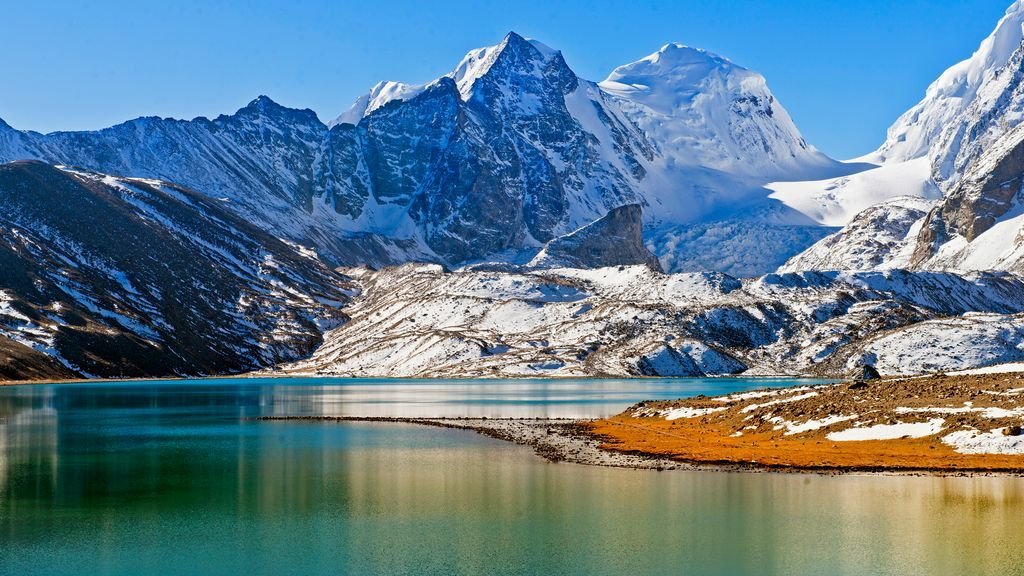India’s charm lies in its diversity—of cultures, cuisines, and historic cities. Among all routes that tourists explore, Golden Triangle India is perhaps the most iconic. Comprising three of the country’s most vibrant cities—Delhi, Agra, and Jaipur—this triangle offers a deep dive into India’s royal past, spiritual traditions, architectural marvels, and modern buzz.
Whether you’re a first-time traveler or a returning explorer, this route opens the door to India’s cultural richness in just one trip.
What is the Golden Triangle India?
The term Golden Triangle India refers to the triangular travel circuit connecting Delhi, Agra, and Jaipur. Each city lies roughly 200–250 km apart, forming a triangle on the map.
- Delhi – The capital city, blending old Mughal architecture with modern developments.
- Agra – Home to the Taj Mahal, a symbol of eternal love and one of the Seven Wonders of the World.
- Jaipur – The Pink City, known for royal palaces, colorful markets, and desert charm.
Travelers usually start their journey in Delhi, head south to Agra, then west to Jaipur, and return to Delhi to complete the triangle. It’s the perfect route for those looking to experience the soul of North India in a compact yet enriching journey.
Why Choose the Golden Triangle India Route?
1. Perfect Introduction to India
If you’ve never been to India before, this route is ideal. It covers multiple layers of Indian culture—religion, history, architecture, food, and day-to-day life. It’s the best way to dip your toes into India’s colorful chaos and warmth without feeling overwhelmed.
2. Diverse Experiences
In just a few days, you can experience:
- The narrow, buzzing lanes of Old Delhi
- The romantic Mughal monuments of Agra
- The royal heritage and colorful streets of Jaipur
The contrast between the cities makes the journey exciting and ever-changing.
3. Easy Accessibility
All three cities are well-connected by road, train, and even air. The newly introduced Gatimaan Express from Delhi to Agra and Shatabdi Express from Jaipur to Delhi have made the journey smoother and faster for tourists.
Detailed Itinerary for Golden Triangle India Tour
Let’s break down what a typical Golden Triangle India itinerary looks like:
Day 1–2: Delhi
Your journey begins in Delhi, where ancient history and modern India coexist. Spend the first two days exploring:
- Red Fort – A UNESCO World Heritage site, showcasing Mughal architecture.
- Jama Masjid – One of India’s largest mosques.
- Qutub Minar – A towering 12th-century minaret with Indo-Islamic art.
- India Gate & Rajpath – A tribute to Indian soldiers and heart of modern Delhi.
- Humayun’s Tomb – A precursor to the Taj Mahal in design.
- Chandni Chowk – Old Delhi’s bustling market where food, fabrics, and chaos meet.
Tip: Don’t miss trying street food like chaat, paratha, and jalebi.
Day 3–4: Agra
On day three, travel to Agra. The highlight of your visit, of course, is the Taj Mahal, but there’s more:
- Taj Mahal – Visit early in the morning or at sunset for fewer crowds and better light.
- Agra Fort – A red sandstone fortress with royal quarters and historic relevance.
- Mehtab Bagh – A garden offering a rear view of the Taj, ideal for photos.
- Itmad-ud-Daulah’s Tomb – Known as the “Baby Taj.”
Enjoy the local specialty Petha (a translucent sweet) and shop for marble handicrafts.
Day 5–6: Jaipur
From Agra, drive to Jaipur, the capital of Rajasthan. Stop en route to visit Fatehpur Sikri, a perfectly preserved Mughal town that is now abandoned.
In Jaipur, soak in the Rajputana grandeur:
- Amber Fort – A massive fort-palace with elephant rides and artistic courtyards.
- City Palace – A blend of Mughal and Rajasthani architecture.
- Hawa Mahal – The famous “Palace of Winds” with its honeycomb façade.
- Jantar Mantar – A UNESCO-listed observatory with giant instruments.
- Bapu Bazaar – For colorful textiles, handicrafts, and jewelry.
Taste traditional Rajasthani thali and watch a folk dance show if possible.
Day 7: Return to Delhi
Complete the triangle by returning to Delhi. Depending on your schedule, spend the evening shopping at Connaught Place or take a heritage walk before departing.
Best Time to Travel Golden Triangle India
The best time to explore Golden Triangle India is between October and March. The weather is cooler, making sightseeing comfortable. Avoid the summer months (April to June) when temperatures can soar past 40°C.
Tip: If you travel in January, you may catch the Republic Day Parade in Delhi—a spectacle of culture and defense.
Golden Triangle India: Travel Tips for First-Time Visitors
- Hire a local guide at major monuments for richer insights.
- Dress modestly, especially while visiting temples and mosques.
- Carry cash for small purchases in markets, though digital payments are increasing.
- Pre-book tickets for monuments like the Taj Mahal online to avoid queues.
- Stay hydrated and carry sunscreen, especially in Jaipur.
- Choose accommodations wisely – budget hotels to 5-star palaces are available in all cities.
Golden Triangle India with Extensions
Many travelers also add nearby destinations to extend their trip:
- Varanasi – For a spiritual experience on the Ganges.
- Ranthambore National Park – For tiger safaris.
- Udaipur – The City of Lakes, just a few hours from Jaipur.
- Rishikesh and Haridwar – For yoga and river rafting.
These additions allow you to explore beyond the triangle and dive deeper into India’s diversity.
Golden Triangle India for Photography Lovers
If you’re into photography, Golden Triangle India is a goldmine. Capture:
- Morning light on the Taj Mahal
- Colorful saris and spice markets in Jaipur
- Ancient monuments with bustling backdrops in Delhi
- Street portraits, architecture, and candid life moments
It’s one of the most photogenic circuits in the world.
Golden Triangle India: Budget Breakdown
Here’s a rough cost estimate for a 6N/7D trip:
- Budget Trip: ₹25,000 – ₹35,000 (~$300–$400)
- Mid-Range: ₹50,000 – ₹70,000 (~$600–$850)
- Luxury Trip: ₹90,000 and up (~$1,000+)
This includes transport, accommodation, food, entry tickets, and local guide charges. You can cut costs or splurge based on your preference.
Golden Triangle India in 2025: What’s New?
As India gears up to welcome more global tourists post-pandemic, 2025 brings:
- More eco-tourism initiatives across Delhi and Jaipur.
- QR-guided tours in major monuments.
- Improved public transport options and better signage in English.
- Tourist SIM cards and e-visa support.
The government and private operators are streamlining tourist experiences, making the Golden Triangle India even more visitor-friendly.
Is Golden Triangle India Safe for Solo Travelers?
Yes, it’s relatively safe, even for solo women travelers. Stick to known tour providers, travel during daylight, and stay in well-rated accommodations. Most areas in these cities are used to hosting international tourists and are welcoming and helpful.
Conclusion: Is Golden Triangle India Worth It?
Absolutely. The Golden Triangle India route remains one of the best ways to explore India’s history, heart, and soul. It condenses centuries of heritage, flavors, colors, and stories into one memorable journey.
Whether you’re interested in architecture, culture, food, photography, or simply discovering something new, this travel circuit will leave a lasting impression.
So pack your bags, grab your camera, and get ready for a trip that captures the essence of India in just a week. In 2025, Golden Triangle India isn’t just a tourist route—it’s a deep, vibrant experience waiting to be lived.







Leave a Reply